OP Sequence
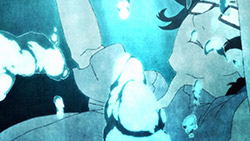 |
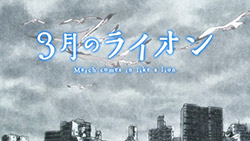 |
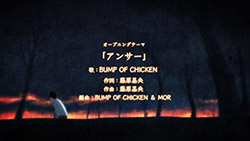 |
 |
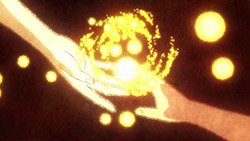 |
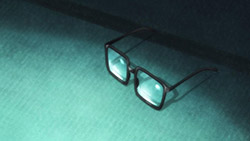 |
OP: 「アンサー」 (Answer) by BUMP OF CHICKEN
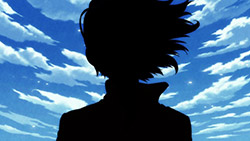 |
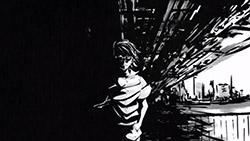 |
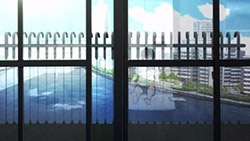 |
 |
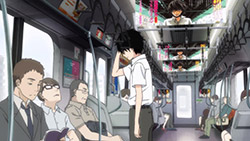 |
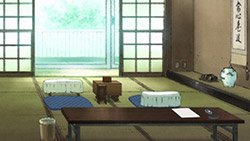 |
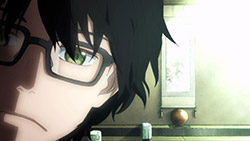 |
 |
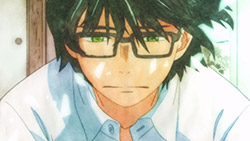 |
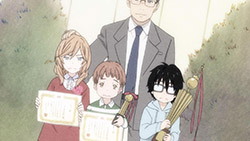 |
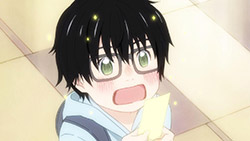 |
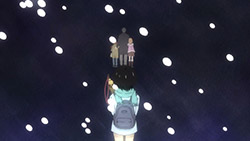 |
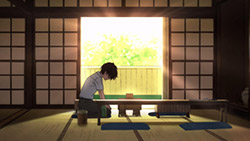 |
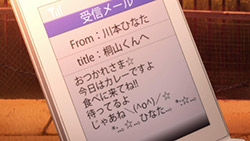 |
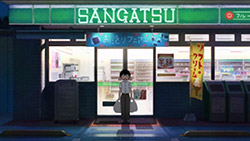 |
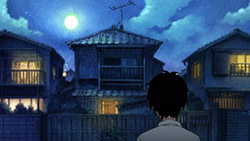 |
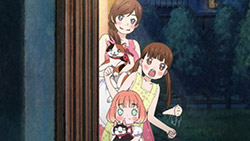 |
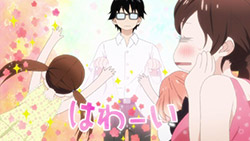 |
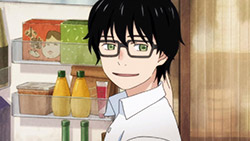 |
 |
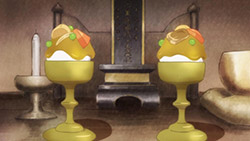 |
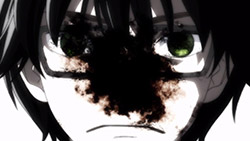 |
 |
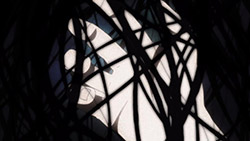 |
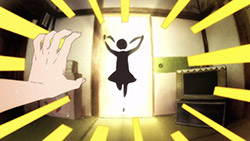 |
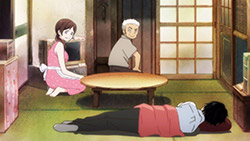 |
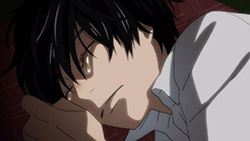 |
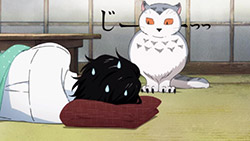 |
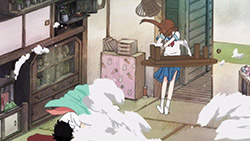 |
 |
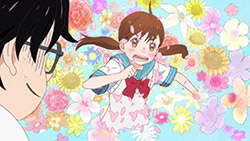 |
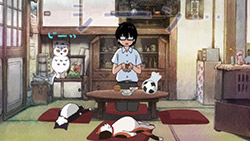 |
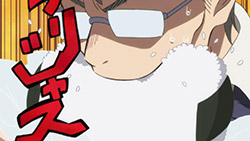 |
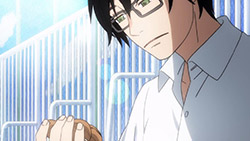 |
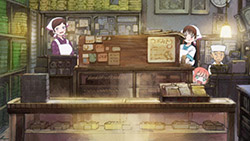 |
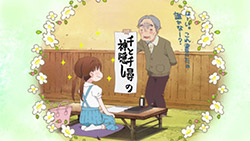 |
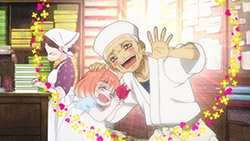 |
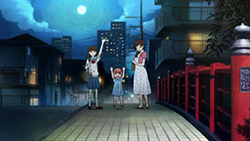 |
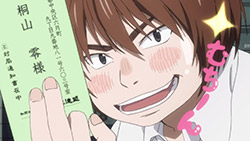 |
「桐山零 / 河沿いの町」 (Kiriyama Rei / Kawazoi no Machi)
“Kiriyama Rei / The Town Along the River”
There is an interesting genre of anime that has surprising persistence every season, yet I think we simply don’t talk about enough: the esteemed ‘Anime Where the OP Tells You Nothing About What It Is About’. 3-gatsu no Lion is a natural fit for this category, as you could no doubt tell when you were wondering what manner of Apocalypse it was trying to show in its opening minutes. As I mentioned in the preview, 3-gatsu is the adaptation of the manga of the same name by Umino Chika, who also notably did Honey and Clover. And so 3-gatsu is at once subtle and complicated, and hard to represent with just a minute or so of imagery and a theme song. It might, however, surprisingly be right up the alley of director Shinbou Akiyuki and the studio he is attached to, Shaft. It seems that when faced with complication Shinbou instead goes for abstraction, hoping that along the way a sensible metaphor will appear from somewhere (this time, his favourite motif: water). It’s not quite as pretentious as I make it sound though, for a lot of the things that make good drama like inner turmoil are abstract, so what are we to do?
Umino Chika is actually already really good, so for the anime we actually don’t really have to do too much more. Some improved visual humour and a few Shinbou flourishes aside (I mean, how can he resist?), 3-gatsu is a very faithful anime adaptation. Even if it wasn’t explicitly going through the manga chapter by chapter, it’s quite noticeable that a lot of respect has been shown to the manga’s original direction. If one were to make a close comparison, they would find many panels that were lifted straight from the manga to be directly translated into anime. Normally here I’d perhaps point some criticism at the anime staff for lack of ambition or a even lack of understanding of the difference between still frames and animation, but 1) really, whatever works, 2) ‘a few Shinbou flourishes’ is already stylistic enough, and 3) when we have a source this good, why run from it?
It’s also not that the anime medium does not add value to 3-gatsu. Let’s just have a look at how it opened. Now, chapter 01 is simply Kiriyama Rei. Rei (Kawanishi Kengo) is our protagonist, so we need to learn something about him, fair enough. What 3-gatsu actually does, to start, is simply show us his going through his life, no narration, no internal monologue. This is great for two reasons: first, I’m all for showing over telling (look, you can at how much you can deduce about a character just from a few shots of his room) but also because the silence is so effective. One thing that anime has over manga: sound. While the scene actually played out fairly similarly in both mediums, it was much easier to notice the lack of dialogue and general lifelessness, especially between Rei and his father(-figure). It made for a stark contrast when Rei goes to have dinner with the lively Kawamoto sisters (Kayano ai, Hanazawa Kana, Kuno Misaki). It’s an effective juxtaposition that both draws out the despondency of Rei’s life in the first half and the personalities of the cast in the second.
Also, the insert song was great. I don’t know why it’s French, though.
Overall, a very solid start to the series, without much criticism or controversy from my end. That said, I really had no doubts that 3-gatsu no Lion was going to be good. The lack of any big surprises is actually good news in my book. If you’re a manga, a daresay you can feel safe with this adaptation, if you’re not, then perhaps you’re interested in the human drama carried by a deep cast, or a slice-of-life where life isn’t all skittles and beer but people get by anyway. Or maybe you just remember that Honey and Clover was pretty good. Chances are, 3-gatsu no Lion will be as well.
ED Sequence
 |
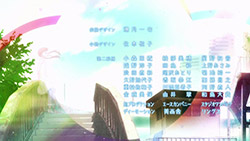 |
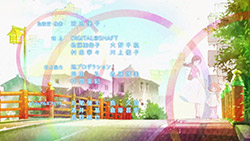 |
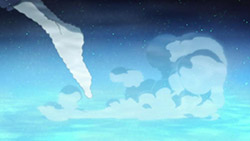 |
 |
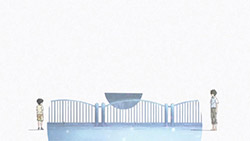 |
ED: 「ファイター」 (Fighter) by BUMP OF CHICKEN
Preview
 |
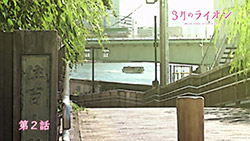 |
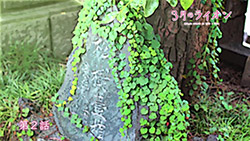 |

Ah the visuals and the feels 😀 great 1st episode looking forward to the rest. (also I new that the character designs reminded me of something but you pointed out honey and clover which I also adore alot)
Umino Chika also did the character designs for the Higashi no Eden anime.
How the hell can you say he made it work? This was mediocre (said in Immortan Joe’s voice) by almost all accounts. Shindou “flourishes” in anime are the real life equivalent to injecting HIV positive blood into a newborn baby. I’ll be sticking to the manga.
Perhaps I don’t share your opinion. Couldn’t that be a possibility?
This start was promising and the only downside for me is “Shaft” – I just don’t like their style. 😐
Absolutely loved this premiere. I could say a lot about this episode, though I guess I’ll focus on the visual style used here. If you ask me, I think SHAFT did a great job here. I’ve never hated or even disliked the company’s style, and here, especially, I think they know how to use their style effectively.
The biggest effect all these visual flairs do is allow us to really get into the head of Rei, and the mental state he is in. The visuals combine with the sound and pacing to really make you feel the depression he finds himself in. And all this gets turned up once he enters the Kawamoto household. The tonal change there is huge and outright jarring, and yet, I think that is completely intentional. It feels like the girls’ house is a completely different world, one which, at the moment, Rei doesn’t seem capable of really connecting with, because of how stark a contrast it is. Of course, that “alternate world” is also probably the only thing keeping him from completely falling into despair, and I definitely would love to see if he can ultimately bridge that gap between him and that world.
So for allowing me to really feel what our main protagonist is feeling, I’d say this first episode was a huge success, SHAFT visuals and all.
I dare say I don’t think any other studio could’ve handled this better. I didn’t get to watch Honey and Clover yet so my judgment comes from this pilot alone, but SHAFT handled Rei’s drama rather fascinatingly.
All I’m hoping for is some serious character development to come if this pilot is any hint, but I’m totally going along with this nonetheless.
I didn’t like the contrast between drama and comedy that much, it feels like an anime without identity. Regardless, I like to see where this is going.
It was good, and interesting enough to give it a few more episodes, but it definitely wasn’t a Yuri on Ice which absolutely blew me away. No mention of the obviously best characters, the talking cats? I’m disappointed lol.
It just goes to show how little Rei and his father communicate when even the cats manage to talk.
I hated this.
I seriously hated this.
I would’ve been OK with a few forced head tilts, stark visuals, and the usual text-only shot – HELL, considering how the manga begins, the typical SHAFT text-only shots would’ve been GREAT for that first sequence, unlike what we ended up getting.
I even thought “SHAFT’s good at architectural stuff right? Maybe it’s good that they’re here because the city shots are gonna be gorgeous.”
I hated this. This spastic, hyperactive, completely-missing-the-damn-point mess. Here I am dropping the only show I had picked up this season.
Maybe it says more about me, but many of the things you describe as being great about it, I couldn’t stand. It felt schizophrenic, jumping between DRAMA and “hearing the cats’ thoughts” and back.
The key in appreciating this episode is realizing that it’s all about juxtaposition.
The first half of the series is meant to be in extreme difference in terms of atmosphere, mood, and style compared to the second half of the episode; you can’t have a juxtaposition without two contrasting scenes.
In addition to this, the first half of the episode is meant to be uncomfortable. Rei isn’t feeling anything remotely comfortable. He’s pitted against his foster father, in a match where only the winner will advance. Remember the news about a person murdering his own father with a hammer? That’s exactly what Rei feels, hammering his father with every shogi move he makes against him.
Oppressive, lonely, and troubled; these are the emotions we’re meant to feel in the first half of the episode. The motif of water is prominent in this episode, more so in the first half, as Rei felt drowning in a sea of troubles, given his equally troubling familial background.
If anything I think that the episode succeed in doing so. The first half of the episode really felt heavy and choking in the first part, while the prominent silence (which is more effective in an anime rather than a manga!) really goes far to show how isolated Rei truly is to everything.
In much, much contrast to this, we have the second half of the episode, Rei’s refuge in the Kawamoto family. See how stark the difference between the atmosphere is? How lighthearted, how bright Rei’s life is when he’s together with the Kawamoto?
And that, that there is your juxtaposition between the two scenes. The warmth of a family in contrast of the cold calculating shogi halls. The small wooden house compared to the imposing shogi office where the competition was held. The boisterous laughter compared to the silence so prominent to the first half of the episode. And the larger the difference, the more stark the contrast, the better. It really shows how Kawamoto family is possibly the only thing that allows Rei to get by in life so far, the only thing that accepts him despite his turbulent past.
The visual storytelling in this episode, was top notch. I particularly love the foreboding silence in the first half of the episode. In a manga, a silence is the norm, apart from skillful use of paneling and sfx. But in an animation? Silence is really out of the place and drive home that feeling of isolation.
Have been long a big fan of the manga, and looking forward to (judging by the first episode) a wonderful, faithful yet creative adaptation!
Well if all that I felt n thought was intentional I don’t know what to say
I’ll try to watching again next week, sometimes the story works better (for me) once I can see a few episodes, with a better idea of what it wants to accomplish. It was a good episode, just not great.
“In addition to this, the first half of the episode is meant to be uncomfortable. Rei isn’t feeling anything remotely comfortable. He’s pitted against his foster father, in a match where only the winner will advance. Remember the news about a person murdering his own father with a hammer? That’s exactly what Rei feels, hammering his father with every shogi move he makes against him.”
But all of that would have made more sense if we had the tiniest bit of context. I only understood the importance of the match in the second half. Which doesn’t mean they had to explain everything right away, but then maybe tone down the drama? Make the tone more neutral, then slowly reveal everything later and make those scenes retroactively acquire meaning. This kind of situation required subtlety, and that was as subtle as a hammer blow.
We did have context.
His foster father is the father of a Shogi-centric family, and while he believes in cultivating Shogi talent within said family, he is a caring father as well and acts like any other father does….for his children only. Not the same kind of care for Rei though. He only cares about his talent for Shogi, the one and only reason he took him under his wing. Rei is nothing more than a talent for him. He asks about how he’s been, but doesn’t go beyond that and then only talks about the weather briefly before proceeding to his only purpose with him. In other words, he’s not even trying to care for him personally. These images might help:
https://randomc.net/image/3-gatsu%20no%20Lion/3-gatsu%20no%20Lion%20-%2001%20-%20Large%2010.jpg
https://randomc.net/image/3-gatsu%20no%20Lion/3-gatsu%20no%20Lion%20-%2001%20-%20Large%2011.jpg
https://randomc.net/image/3-gatsu%20no%20Lion/3-gatsu%20no%20Lion%20-%2001%20-%20Large%2012.jpg
Hmmm…. I shall say that juxtaposition is most effective in increasing dramatic tension when one lets entire scenes or sequences linger while utilizing transitions at certain points of those scenes or sequences that are directly relevant to the story or thematic arc. The other way is to utilize jump cuts while basing them on the particular story or thematic arc in cases where a need to increase the momentum of the pacing is required. Those are most frequently used in action-based or unnerving stories.
What is seen here is simply jarring.
Wish it was Noitama tho, but can’t complain. I’m just happy we have an anime adaptation.
Wanted to read the manga before, especially after finding out it was Umino Chika’s work, but didn’t after the anime adaptation was announced a week later
I loved the manga and Im sure ill love the anime. Bring on the feels!
Sangatsu no Lion’s pilot was awesome. The blend of drama and comedy is just right. Also, it feels soothing to watch. I also love both OP and ED. This is something that I expect from an NHK anime.
I like this premiere so much that I instantly binged the whole manga chapters.
As someone who read both Honey & Clover and 3 Gatsu No Lion, and watched the whole Honey & Clover anime, I really find Akiyuki Shimbo’s rendition of 3 Gatsu no Lion jarring.
I really liked how JC Staff captured the essence of Chica Umino’s storytelling. That soft yet poignant feeling during the serious, dramatic moments; as well as the funny, light hearted yet really enjoyable and relatable comedic moments. I really liked how the H&C anime portrayed those moments without pretension.
Reading H&C and Sangatsu, Sangatsu has a more somber mood compared to H&C due to Kiriyama’s loneliness. Still, the feels and comedy you get from both H&C and Sangatsu are pretty similar, that’s why I really liked reading the Sangatsu manga as well.
Now, with Akiyuki Shimbo’s rendition, it felt too dark, too abstract and too artsy fartsy. That relatability and feelings you get from a work by Chica Umino is turned into a gloomy, eccentric Akiyuki Shimbo rendition.
It felt like I was watching something more like Monogatari series rather than a Chica Umino work as I see it. And the comedic parts, it felt more like a watching something like Arakawa under the Bridge or Zetsubo Sensei. It felt forced and unnatural.
Sigh, why didn’t JC Staff get this instead. Oh well, we can’t do much about it.
I’m still watching this though, being a Chica Umino work. My expectations though are now lower. As a friend of mine said, story is by the book, but the anime feels really weird.
I can definitely say this is an Akiyuki Shimbo work. And I hate Akiyuki Shimbo.
I was afraid to see this words. Why didn’t Kasai Kenichi take this manga? T_T
manga this manga that, whatever. I think the first episode of an anime I never heard about was actually good to watch. Also, they had me at ‘Bump of Chicken’ xD since I really like their music
My only complain are the awkwars jumps in tone. The transitions between light-hearted, comedic tone and serious, depressing tone aren’t handled well in my opinion.
The fact that the shogi word never appeared in the post is telling so much about the series in the context of it being more or less a sports one, especially in the opposition to first episode of Chihayafuru.
Great stuff so far, expecting even more from next ep.
I was very sad Suga Shikao didnt do the OP or ED themes. He’s perfect for the Rei look.
I can’t recall an anime with opinions so all over the place than this one.
It’s the Shinbou effect, methinks.
I watched episode one and let it sink in. I really love the use of water as symbolism in this show. It’s something that can be used to both portray turbulence and serenity which appears to be the contrasting halves of Rei’s life between Shogi and the Kawamoto trio.
One of the times I’m glade not to have read the manga. I can enjoy the show with an open mind.
The MC reminds me of Squidward. So I have taken to calling him that.
I love the illustrations especially the cat. I think Im going to like the show :p